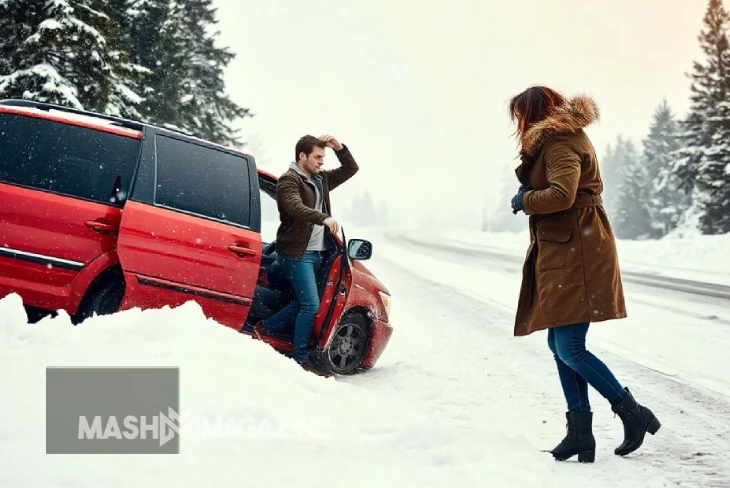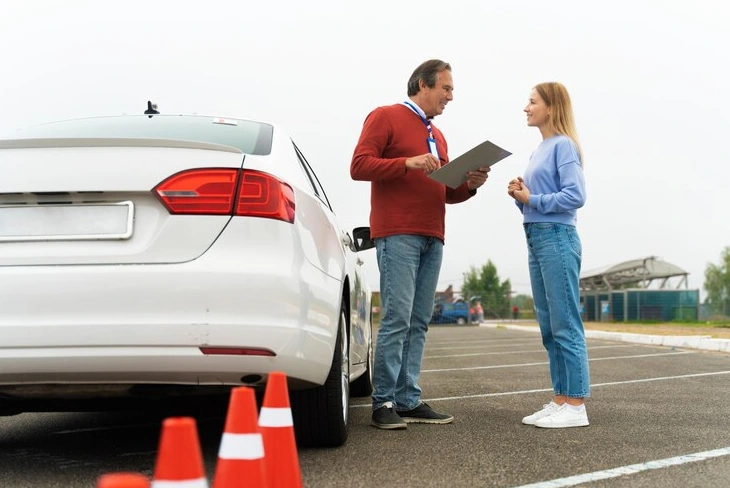Stories, Gossip
& Good Vibes
MashMagazine
Understanding Car Accidents: Causes, Legalities, and Notable Cases

Car accidents—sudden, often violent events—aren’t just statistics on a page; they’re real-life crises that happen daily on our roads. Did you know that globally, about 1.3 million people die in road crashes each year? That’s a staggering 3,287 deaths a day. But here’s the kicker: most of these accidents are preventable. From distracted driving to vehicle design flaws like faulty airbags (e.g., Takata recalls), the causes are as varied as they are numerous. And when metal meets metal at high speeds, it’s not just about the crumpled fenders and shattered glass. A whole legal world springs into action, from personal injury lawsuits to insurance claims.
Let’s not forget the high-profile cases that have captured public attention, reminding us that tragedy doesn’t discriminate based on fame or fortune. Buckle up because we’re about to dive deep into the world of car accidents, exploring everything from common causes to celebrity crashes and the following legal maze.
Leading Causes of Road Collisions

Speeding is a leading cause of fatal crashes. Exceeding speed limits reduces reaction time and increases crash force—a NHTSA study shows speeding contributes to nearly 26% of all traffic fatalities
We’ve all experienced close calls behind the wheel where we’ve thought, “Whew, that was close!” But what leads to those heart-stopping moments turning into full-blown accidents? Well, it’s not always about bad luck or being in the wrong place at the wrong time.
First up, there’s distracted driving. Like when you’re trying to juggle your coffee, adjust the radio, and respond to a text – all while navigating rush hour traffic. It’s a recipe for disaster. Texting while driving increases crash risk by 23 times!
Then there’s the old nemesis: impaired driving. Whether it’s one too many at happy hour or driving under the influence of drugs, impaired drivers are like ticking time bombs on wheels. They’ve got slower reaction times, impaired judgment, and a false sense of confidence that’s a dangerous cocktail on the road.
But let’s not forget about Mother Nature. Weather-related accidents are a huge deal. Rainy roads, icy patches, or even that blinding sun glare can turn a routine drive into a white-knuckle experience. And sometimes, it’s the car itself that’s the problem. Vehicle flaws like faulty airbags (such as the Takata recalls) or defective ignition switches (like GM’s 2014 scandal), can lead to accidents even when drivers act responsibly. These manufacturing flaws often result in large-scale recalls and lawsuits.
Last but not least, there’s the issue of fatigue, especially for our long-haul truckers. Truck driver fatigue is a serious concern. Imagine navigating an 80,000-pound vehicle while struggling to keep your eyes open. It’s a scary thought.
Legal Aspects of Car Accidents
Now, let’s talk about what happens after the dust settles and the tow trucks leave. That’s when the legal world kicks into high gear. And boy, can it get complicated!
Determining fault is critical. Was it the driver who ran the red light? Another motorist? Or it was the city for not maintaining the road properly. In states with laws that divide fault between parties, courts may split the fault between parties. For example, if a driver was 20% responsible for an accident, their compensation could be reduced proportionally—a critical nuance in settlement negotiations.
Suppose you’ve been in an accident and are not at fault. Consider filing a personal injury lawsuit. It’s not just about fixing your car – it’s about covering medical bills, lost wages, and even pain and suffering. But here’s the thing: these lawsuits can be as complex as a Rubik’s cube.
Negligence claims are a big part of car accident cases. It’s about proving that someone didn’t take reasonable care to prevent harm. Maybe they were speeding, or perhaps they were driving a car that they knew had faulty brakes. Whatever the case, if negligence can be proven, it can lead to a personal injury settlement.
And let’s not forget about insurance. After an accident, dealing with insurance companies can feel like navigating a maze blindfolded. They’ve got their agendas, and trust me, it’s not always about making sure you get the best deal.
One more thing: documenting everything is crucial. It’s all potential evidence, from photos of the accident scene to medical reports and witness statements. Remember, if it’s not documented in the legal world, it might as well not have happened.
How Car Accidents Affect Victims and Families
When we talk about car accidents, it’s easy to get caught up in the stats and legal jargon. But let’s not forget the human side of things. Car accidents don’t just affect the people directly involved – they can send shockwaves through entire families and communities.
For victims, the impact can be life-altering. We’re talking about Injuries ranging from whiplash and broken bones to traumatic brain injuries (TBIs) and spinal cord damage, which may require lifelong care. For instance, 20% of crash survivors experience chronic pain, according to the CDC. And it’s not just the visible injuries that matter. The psychological trauma can be just as devastating. PTSD, anxiety, and depression are common aftermaths of serious accidents.
Families often find themselves thrust into caregiver roles overnight. Suddenly, they’re juggling hospital visits, rehab appointments, and keeping the household running. It’s like trying to spin a dozen plates at once, and it’s exhausting.
Then there’s the financial hit. Medical bills can pile up faster than dirty laundry; if the victim can’t work, that’s a double whammy to the family finances. Insurance might cover some of it, but it rarely covers everything.
But it’s not all doom and gloom. Many victims and families find strength they never knew they had. Support groups and counseling can be lifelines, helping people navigate the emotional rollercoaster that follows a serious accident.
And let’s not forget the positive changes that can come from tragedy. Some accident survivors become passionate advocates for road safety, turning their pain into a force for good.
Notable Car Accident Cases
Let’s shift gears and talk about some car accidents that made headlines. These aren’t just fender benders- the crashes that had everyone talking, from water coolers to news desks.
High-profile cases often drive systemic change. For example, Paul Walker’s 2013 Porsche crash sparked debates about vehicle safety standards, while Tracy Morgan’s 2014 collision led to strengthened trucking regulations.
- Claire Bonga Car Accident
- Ethan Hall Car Accident
- Alfred Valles Car Accident
- Alana Factor Car Accident
- Rico Wade Car Accident
- Lil Tay Car Accident
- Michael Doggett Car Accident
- Clayton Hughes Car Accident
- Kylie Roberto Car Accident
- Russell Jankowski Car Accident
- Julia Black Car Accident
- Brittany Johns Car Accident
- Sarah Rocco Keller Williams Car Accident
- Reed Rohlman Car Accident
- Jake Navarro Car Accident
- Dan Bongino Wife Accident
These high-profile cases often lead to changes in laws, improvements in vehicle safety, and increased public awareness about road safety. They’re not just tabloid fodder – they’re catalysts for change.
How to Prevent Car Accidents?

Now, let’s get to the million-dollar question: How do we stop these accidents from happening in the first place? It’s not about wrapping ourselves in bubble wrap or never leaving the house. It’s about smart, proactive steps we can all take.
First things first: defensive driving. It’s not just a fancy term – it’s a lifesaver. Always assume other drivers might make mistakes. Keep your eyes peeled, maintain a safe following distance, and always have an escape route in mind. Stay alert, anticipate others’ actions, and plan, always thinking several moves ahead.
Then, there’s the tech angle. Advanced safety features in cars these days act as a safeguard. Lane departure warnings, automatic emergency braking, and blind-spot detection are not just fancy bells and whistles. They’re extra sets of eyes and reflexes that could save your life.
But let’s not forget the basics. Buckle up every single time. It’s simple, but it’s still one of the most effective ways to prevent serious injury or death in a crash. And for Pete’s sake, put down that phone! No text, call, or social media update is worth risking your life or someone else’s.
The weather can be tricky, but being prepared helps. Good tires, working windshield wipers, and knowing how to handle your car in different conditions can make all the difference. And if the weather’s really bad? It may be time to consider staying put or finding alternative transportation.
Here’s a quick list of additional tips to keep you safe on the road:
- Regular vehicle maintenance.
- Never drive under the influence.
- Obey speed limits and traffic rules.
- Take breaks on long drives to avoid fatigue.
- Use turn signals consistently.
- Adjust your driving to road conditions.
- Keep a safe following distance.
- Be extra cautious in work zones.
- Watch out for pedestrians and cyclists.
- Stay calm and avoid road rage.
- Maintain an emergency kit (flashlight, flares, first-aid).
- Educate teen drivers about graduated licensing programs and risks.
Remember, safe driving isn’t just about protecting yourself – it’s about looking out for everyone on the road. It’s a team effort, and we’re all in this together.
Conclusion
We’ve explored key aspects of road collisions. From the common causes of accidents to the legal maze that follows, and from high-profile cases to prevention tips, we’ve taken a deep dive into the world of car accidents. It’s a complex issue, no doubt about it.
But here’s the thing: knowledge is power. Understanding the causes of car accidents, knowing your legal rights, and learning from notable cases all make us more aware and responsible drivers. And that’s the key to making our roads safer for everyone.
Remember, every time you get behind the wheel, you’re not just driving a car – you’re taking on a huge responsibility. You’ve got your life, your passengers’ lives, and everyone else’s lives on the road in your hands. It’s a big deal, but it doesn’t have to be scary if you’re prepared and mindful.
So, let’s all do our part. Advocate for community safety initiatives, like school zone speed cameras or drunk driving checkpoints, and support vehicle safety innovations such as autonomous emergency braking systems, and always buckle up! And if the worst happens and you do find yourself in an accident? Stay calm, document everything, and don’t be afraid to seek legal help if you need it.
Popular
More like this
Related
Pour Caddy Ultimate Stainless Steel Flask for Golfers: Golf’s Perfect Companion
Essential Guide: Finding Your Coveva Keyboard Instruction Manual S801 C
How to Organize the Perfect Kitchen Island: Complete 2025 Guide
Jade Stice Hiking Accident: Safety Lessons from a Broadway Star’s Tragic Loss
Useful Links
- About Us
- Disclaimer
- Privacy Policy
- Terms and Conditions
- Contact Us
The Latest
Pour Caddy Ultimate Stainless Steel Flask for Golfers: Golf’s Perfect Companion
Essential Guide: Finding Your Coveva Keyboard Instruction Manual S801 C
Subscribe
© 2025 MashMagazine.
